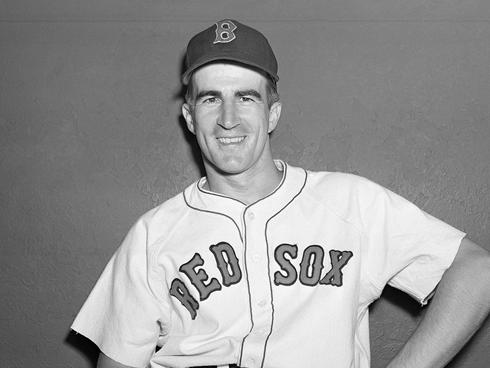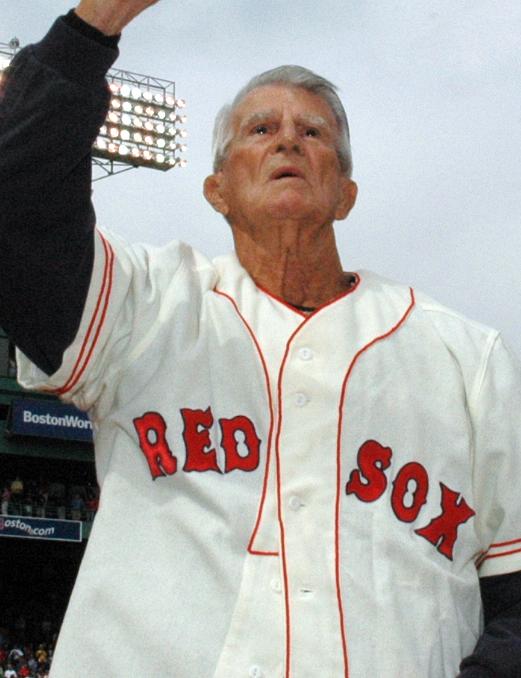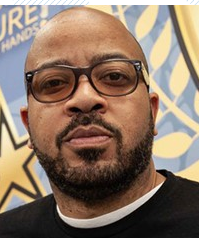Johnny Pesky – Famed Boston Red Sox Shortstop – From Portland Oregon
By PDX People
PORTLAND, Ore. – October is a great time of year because it’s also time for the fall classic as Major League Baseball’s best teams battle it out for the opportunity to go to the World Series.
One of baseball’s most iconic players actually was born in Portland Oregon. Johnny Pesky was Boston’s most well-known shortstop and third baseman during the 1940’s and 1950’s. He had an impressive .307 batting average and played with Ted Williams, Dom DiMaggio and Bobby Dorr.
What’s most impressive about his career is that he also missed three years, like Ted Williams, due to military service and once his career wrapped up he came back to Boston and managed the team for several years.
Early Life
Pesky played for Lincoln High School, and spent several years playing for local amateur teams, such as the Portland Babes, Bend Elks and Silverton Red Sox. The third of these teams was associated with the Silver Falls Timber Company, which was owned by Tom Yawkey, who also owned the major league Red Sox. A skilled ice hockey player, he once worked out with the Boston Bruins. Early in his playing career, Portland sportswriters would abbreviate his name to “Pesky” because it fit better in a box score. He would legally change his name to Pesky in 1947.
Pesky was signed as an amateur free agent by the Red Sox before the 1940 season and spent the next two seasons in the minor leagues. In 1940, he played for the Rocky Mount Red Sox of the Piedmont League, where he was a teammate of future Hall of Famer Heinie Manush, who was the team’s player-manager. After hitting .325 with Rocky Mount, he moved up to the double-A Louisville Colonels, where he also batted .325. The next year, he was in the major leagues.
Major Leagues
During his rookie year in 1942, Pesky led the AL in hits with 205—at the time a record for a rookie—as well as sacrifice hits with 22. He was second only to teammate Ted Williams in average at .331, and finished third in Most Valuable Player voting behind MVP Joe Gordon and Williams.
After missing three seasons due to World War II, Pesky came back in 1946 and seemed not to miss a beat, leading the league in hits once again, batting .335, third in the league, and finishing fourth in the MVP voting while also making his first and only All-Star team. His 53 hits in August set a team record for hits in a month, a record later tied by Dom DiMaggio. In 1947, Pesky batted .324 while leading the league in hits for the third consecutive year with 207.
In the 1947–48 offseason, the Red Sox traded six players and $310,000 in cash to the St. Louis Browns for Vern Stephens and Jack Kramer. Stephens, a three-time All-Star, was also a shortstop, and Pesky was asked to move to third base. The switch took a toll on Pesky, who had his worst season to date as a hitter, as his average dropped to .281. He bounced back to hit over .300 each year from 1949 to 1951, and in 1951 he and Stephens swapped positions, with Pesky returning to short and Stephens moving to third base.
Pesky began the 1952 season very slowly, and by mid-June he had played in just 25 games, batting .149. He was traded to the Detroit Tigers in a nine-player deal. He split time at shortstop with Neil Berry, batting .254 in 69 games with the Tigers. In 1953, the Tigers moved Pesky to second base, and his batting average rebounded somewhat to .292. However, in 1954, the Tigers installed rookie Frank Bolling at second base, and Pesky was demoted to the bench. He was traded in mid-season for the second time, this time to the Washington Senators, but after finishing the season batting just .246 overall, he was released.
Life After The Big Leagues
Following the end of his playing career in Major League Baseball, Pesky’s services remained in high demand as a manager and coach.
Pesky enjoyed two winning seasons in Seattle. At the close of the 1962 campaign, Boston owner Tom Yawkey elevated manager Pinky Higgins to the club’s vacant post of general manager and personally appointed Pesky as Higgins’ replacement. Although the selection of Pesky was a popular choice, the Red Sox were a second division team and notorious as a “country club” — a group of unmotivated players who did what they wanted, when they wanted. In addition, Higgins and Pesky were not particularly close, and the general manager would be accused of undermining Yawkey’s hand-picked skipper.
A major off-season trade added slugging first baseman Dick Stuart to Pesky’s maiden roster, and while Stuart would lead the American League with 118 runs batted in during 1963, he was an atrocious fielder (nicknamed “Dr. Strangeglove” and “Stonefingers”) who would constantly defy Pesky’s authority and make it difficult for him to control his players. Pesky’s 1963 club started quickly. It won 40 of its first 70 games and on June 28 stood only 1½ games behind the league-leading Yankees.[10] The team’s standout performer, relief pitcher Dick Radatz (converted to the bullpen by Pesky at Seattle in 1961), had saved 12 games and won seven others with a 1.16 earned run average to keep the Red Sox in contention to that point.
But the team buckled from poor defense and, apart from Radatz and 20-game-winning starter Bill Monbouquette, lack of pitching depth and went only 36–55 for the rest of the campaign to finish 76–85 and in seventh place in the ten-team American League. The following year, despite another strong contribution from Radatz and the debut of star 19-year-old rookie outfielder Tony Conigliaro, the 1964 Sox continued to languish in the second division, winning only 70 of the 160 games Pesky managed. With two games left in the season, he was replaced as manager by Billy Herman, the club’s third-base coach and a friend of Higgins.
A Lifetime In Baseball
Johnny Pesky stayed active in Major League Baseball for most of his adult life and he was revered by modern day players like David Ortiz who respected him for his keen insight and came back to him on many occasions for help and tips in their careers.
A lifetime .307 hitter, Pesky was a player, manager, broadcaster and, most recently, a special instructor for the Red Sox. The right-field foul pole at Fenway — only 302 feet from home plate — was named the Pesky Pole in his honor.
Yet even though Pesky was a favorite of generations of players and fans, he still had his own place of notoriety in Red Sox history, a place many think is undeserved.
Pesky was often blamed for holding the ball for a split second as Enos Slaughter made his famous “Mad Dash” from first base to score the winning run for the St. Louis Cardinals against the Red Sox in Game 7 of the 1946 World Series.
With the score tied 3-3, Slaughter opened the bottom of the eighth inning with a single. With two outs, Harry Walker hit the ball to center field. Pesky, playing shortstop, took the cutoff throw from outfielder Leon Culberson and, according to some newspaper accounts, hesitated before throwing home. Slaughter, who ran through the stop sign at third base, was safe at the plate, and the best-of-seven series went to the Cardinals.
Pesky always denied any indecision, and analysis of the film appeared to back him up, but the myth persisted.
Johnny Pesky died in 2012 at age 92 but his story still lives on as new fans become learn more about great baseball players like Ted Williams and Pesky who were also part of the “greatest generation”.

Learn More About PDX People
To learn more about PDX People, or people from Portland Oregon, click here and don’t forget to bookmark this page for the latest from PDX People.
 Skip to content
Skip to content






